
The best online fitness resource you'll ever need. We filter out the BS to ensure you meet your health and fitness goals!

The best online fitness resource you'll ever need. We filter out the BS to ensure you meet your health and fitness goals!
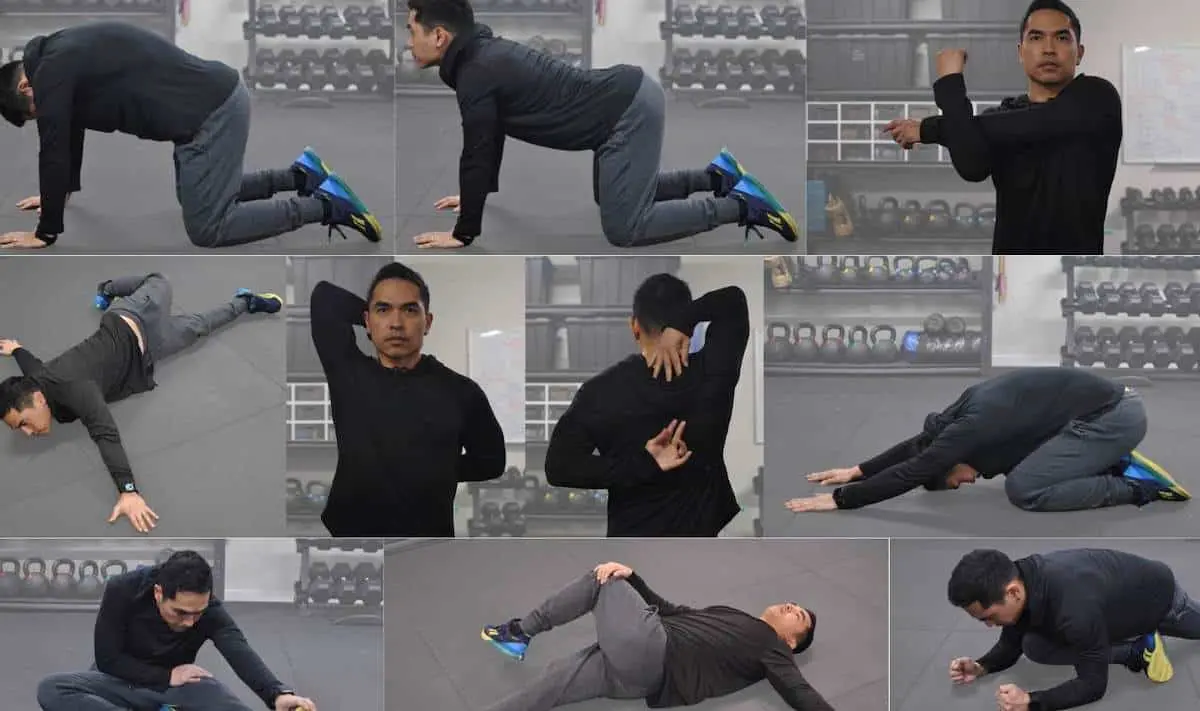
As a certified personal trainer with years of experience under my belt, I’ve seen firsthand how a well-rounded fitness routine can transform lives. But there’s one element that often gets overlooked: stretching.
You might be surprised to learn that dedicating just 30 minutes a day to a full body stretching routine can significantly improve your flexibility, reduce muscle tension, and even enhance your overall workout performance.
In our fast-paced world, finding time for a comprehensive workout can be a challenge. That’s where the beauty of our 30 minute full-body stretching routine comes in. It’s quick, effective, and can be done anywhere, anytime. Whether you’re an athlete looking to improve your game or someone simply seeking to add a dash of fitness into your busy schedule, this routine is for you.
In this article, I’ll guide you through an easy-to-follow, 30 minute full-body stretching routine that I’ve refined over my years of training. This routine targets all the major muscle groups, ensuring a balanced approach to flexibility and mobility. So, let’s dive in and explore the world of stretching together!
Jump to the stretching routine.
Alternatively, you can download a PDF version of the stretching routine below:
| Program style | Stretching |
| Program duration | Should be done everyday |
| Workout duration | 30 mins |
| Goal | Increase mobility and flexibility |
| Level | Beginners and advanced |
| Gender | Male and female |
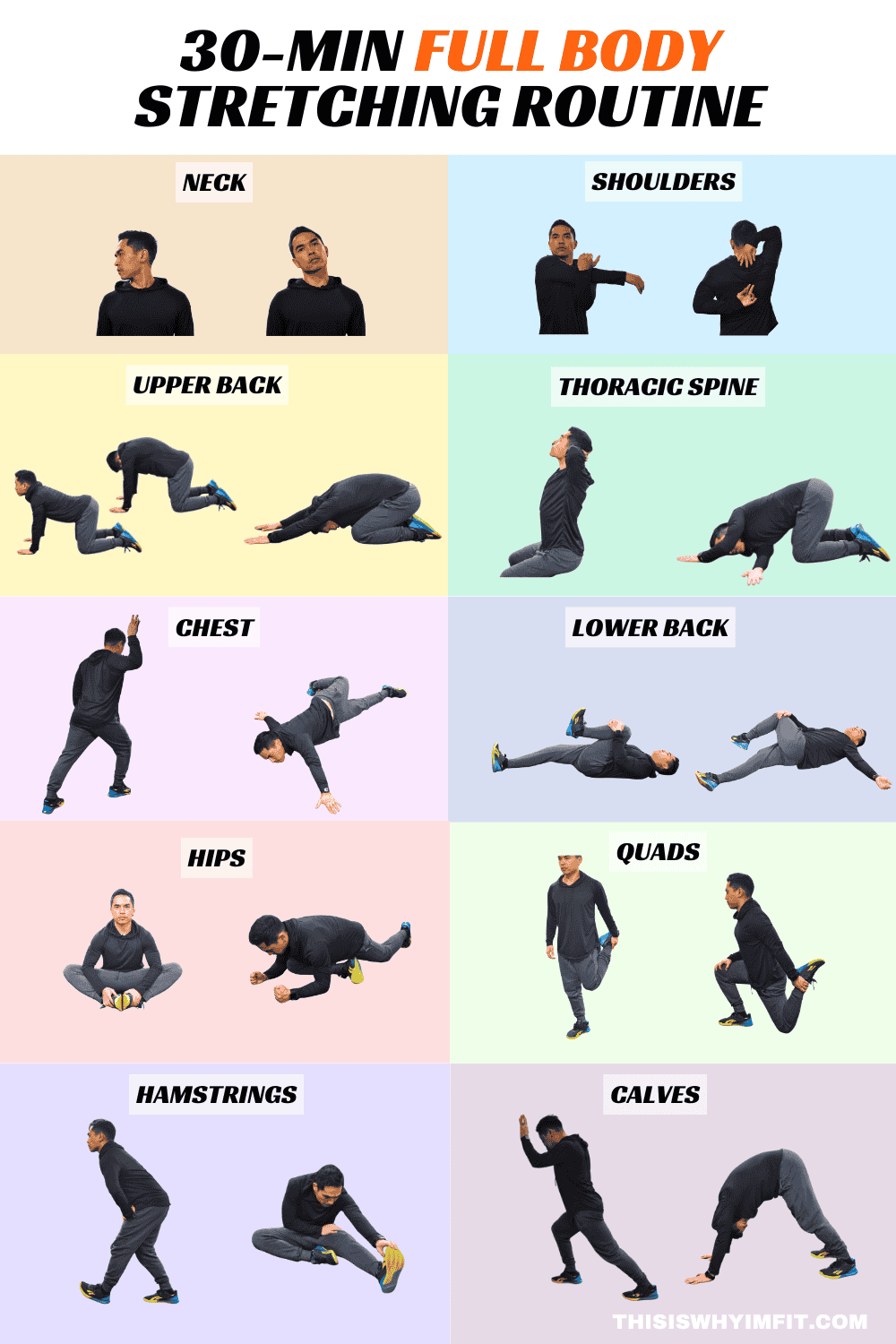
You might be wondering, “Why should I stretch? I’m not a gymnast or a ballet dancer.” Well, let me tell you from my years of experience as a personal trainer, stretching is not just for the flexible or the athletic. It’s for everyone.
When you stretch, you’re not just elongating your muscles and tendons. You’re also increasing your range of motion, improving your posture, and enhancing your athletic performance.
Think of it this way: your muscles are like rubber bands. The more you stretch them, the farther they can go without snapping.
But the benefits of a full-body stretching routine go beyond just physical improvements. Stretching can also be a powerful stress-reliever.
As you stretch, you allow your body to release built-up tension, promoting a sense of relaxation and well-being. It’s a moment of calm in your busy day, a time to reconnect with your body and breath.
Moreover, a regular stretching routine can help prevent injuries. By improving your flexibility and range of motion, you’re less likely to strain or pull a muscle during your workouts or daily activities.
So, whether you’re looking to touch your toes, improve your posture, or simply take a moment for yourself in a busy day, a full-body stretching routine can be a game-changer. And the best part? It only takes 30 minutes of your day. Trust me, your body will thank you for it!
The structure of this routine is designed to be simple yet effective, ensuring that you get the most out of your 30 minutes. It’s divided into three main parts: the warm-up, the targeted stretches, and the cool-down.
Every good workout begins with a warm up, and stretching is no exception. The warm-up phase is all about preparing your body for the stretches ahead.
It involves light cardio activities like jogging in place or doing jumping jacks for about 5 minutes. This gets your blood flowing and your muscles warmed up, reducing the risk of injury.
This is the heart of the routine. We’ll be doing a series of stretches targeting all the major muscle groups in your body: the neck, shoulders, upper back, chest, lower back, hips, quadriceps, hamstrings, calves, and feet. Each muscle group will have 2 effective stretches assigned.
Each stretch should be held for about 30 seconds. Remember, the goal is not to stretch to the point of pain, but to a point of slight discomfort. This means you’re effectively stretching the muscle without causing any harm.
Just as we warmed up at the start, we’ll cool down at the end. The cool-down phase is about bringing your heart rate down and giving your muscles a chance to relax after the stretching. This can involve light cardio activities like walking or slow jogging for about 5 minutes.
Throughout my years as a personal trainer, I’ve found this structure to be incredibly effective for a full-body stretching routine. It ensures that no muscle group is left out, and it fits perfectly into a busy schedule.
So, are you ready to stretch your way to better health and flexibility? Let’s get started!
As a certified personal trainer, I’ve seen the difference a good warm up can make. It’s like preparing your car for a long drive.
You wouldn’t just start your car in the middle of winter and immediately hit the highway, would you? Just like your car, your body needs a little time to “warm up” before it’s ready to perform.
A warm up gradually increases your heart rate and circulation, warming up your muscles and helping them become more flexible. This process not only prepares your body for the stretching routine but also helps reduce the risk of injury.
For our full body stretching routine, we’ll start with a 5-minute warm-up consisting of light cardio exercises. Here’s a simple warm-up routine you can follow:
The goal of the warm-up is to prepare your body for the stretching routine, not to exhaust you. So take it at a pace that feels comfortable for you. Now that we’re warmed up, let’s get into the stretching.
Now that we’re warmed up, let’s dive into the heart of our 30 minute full-body stretching routine. This part of the routine is all about targeted stretches for each major muscle group. Remember, we’re aiming for gentle, sustained stretches, not pain or discomfort.
The neck is often a hotspot for tension, especially if you spend a lot of time at a computer. Regular neck stretches can help relieve this tension and improve neck mobility.

This stretch targets the sternocleidomastoid and scalene muscles in your neck. These muscles are often strained during prolonged periods of looking down or maintaining a single posture. Regularly stretching them can help relieve tension and improve neck flexibility.
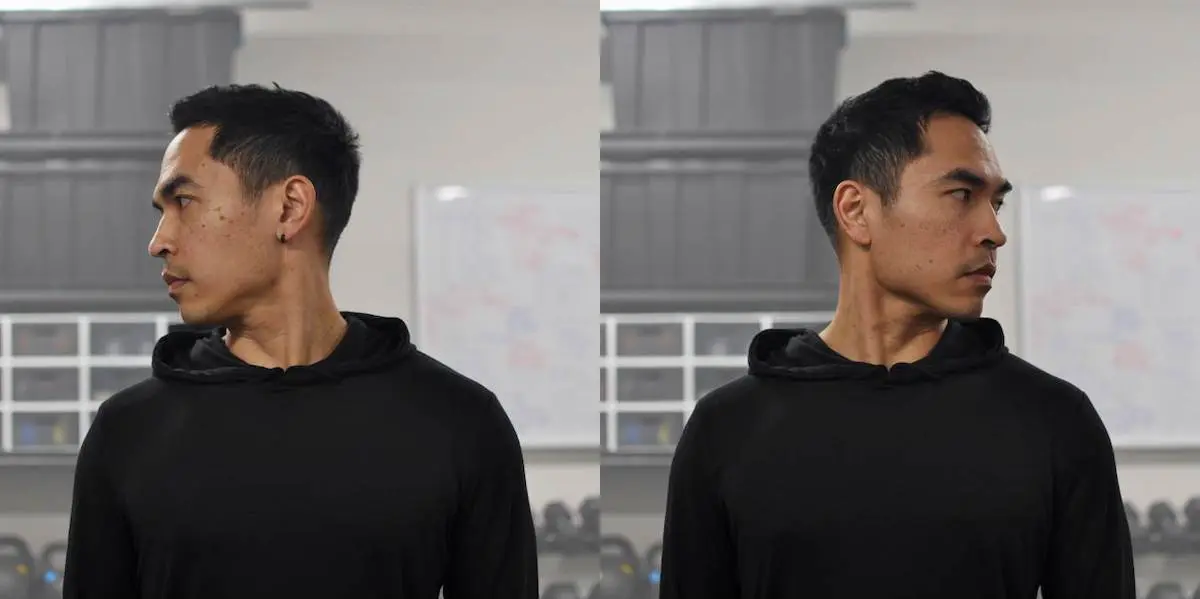
This stretch targets the same neck muscles but in a different way, promoting mobility and relieving any stiffness in the neck. It’s particularly beneficial for those who work on computers or drive for long periods.
Shoulder stretches are crucial for maintaining mobility and reducing the risk of shoulder and neck pain, especially if you carry heavy bags or spend a lot of time at a computer.
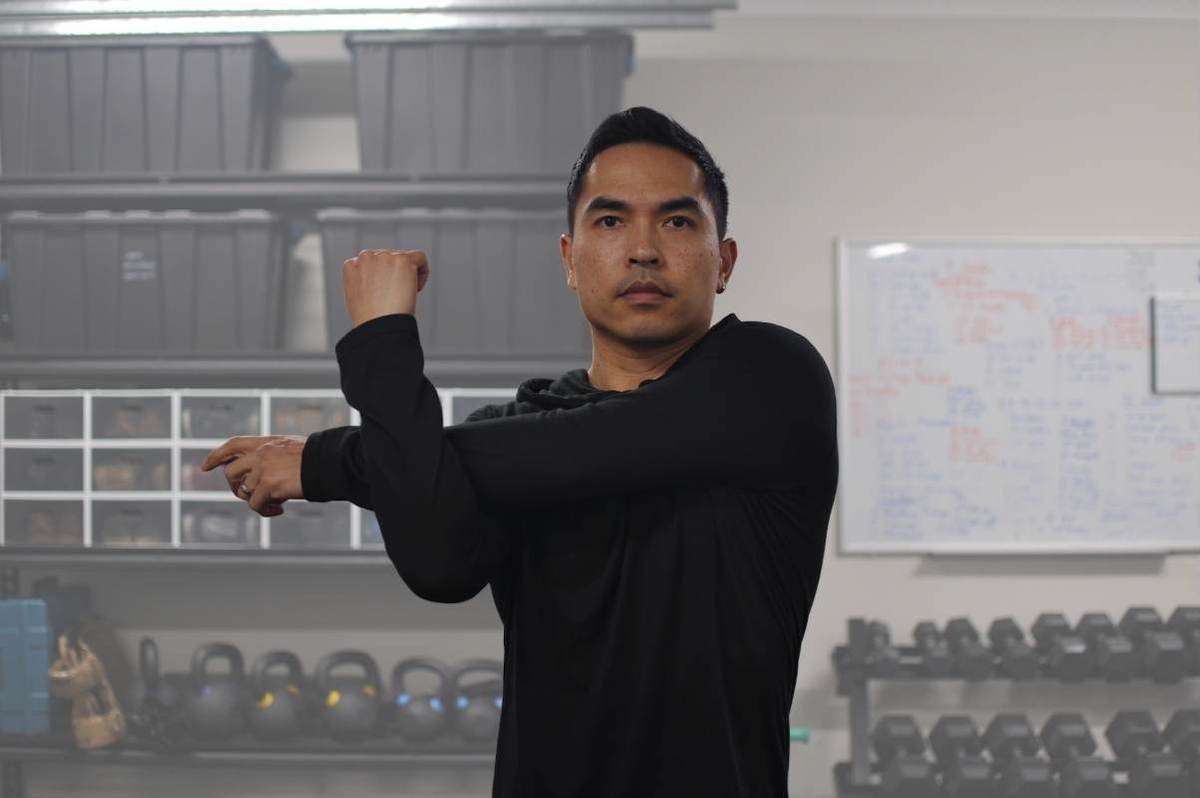
This stretch targets the posterior deltoid in your shoulders, helping to improve mobility and reduce shoulder tension. It’s particularly helpful for preventing shoulder injuries, particularly in people who engage in activities that involve throwing or overhead movements, such as tennis, swimming, or weightlifting.
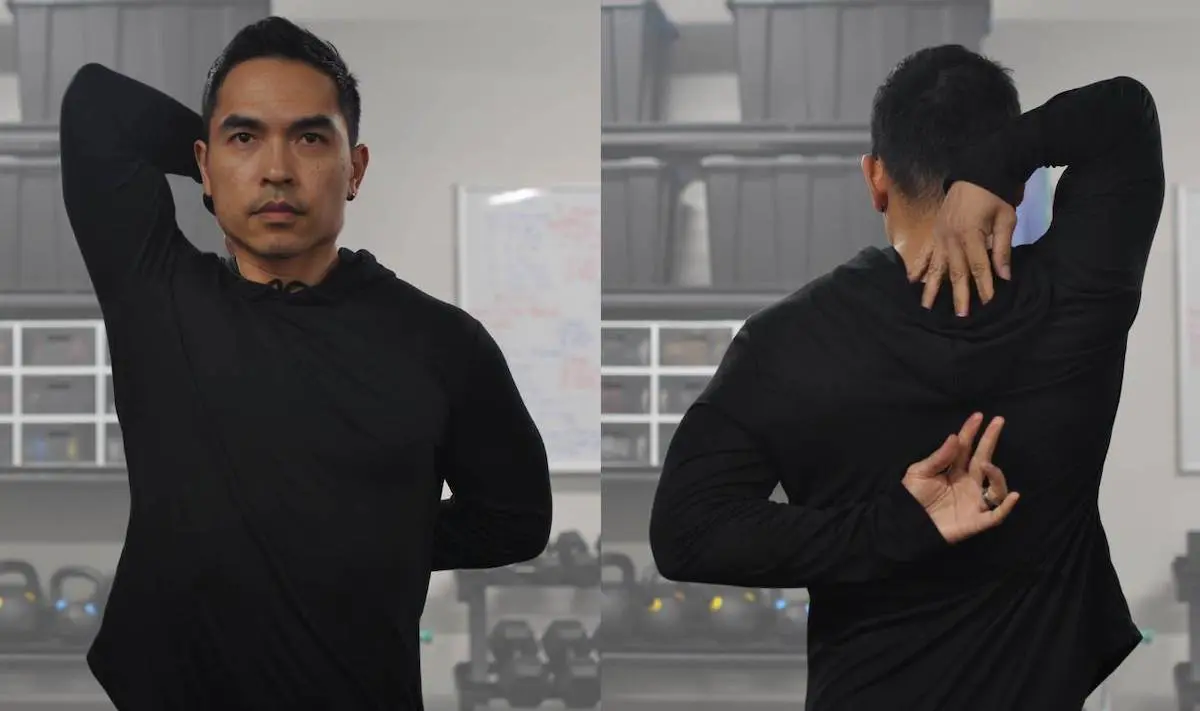
This yoga pose is a deep shoulder stretch that targets the deltoids and triceps. It’s great for improving shoulder flexibility and relieving tension in the upper body. The act of reaching the hands towards each other encourages you to sit up straight and align your spine properly, which can really help improve your overall posture.
If you’re someone like me who can’t actually clasp your fingers together, fear not! As long as you reach as far back as you can with both arms, the stretch that you feel is what we’re aiming for here.
These stretches are crucial for anyone who spends a lot of time sitting or hunched over a computer. They help improve posture and reduce the risk of back pain.
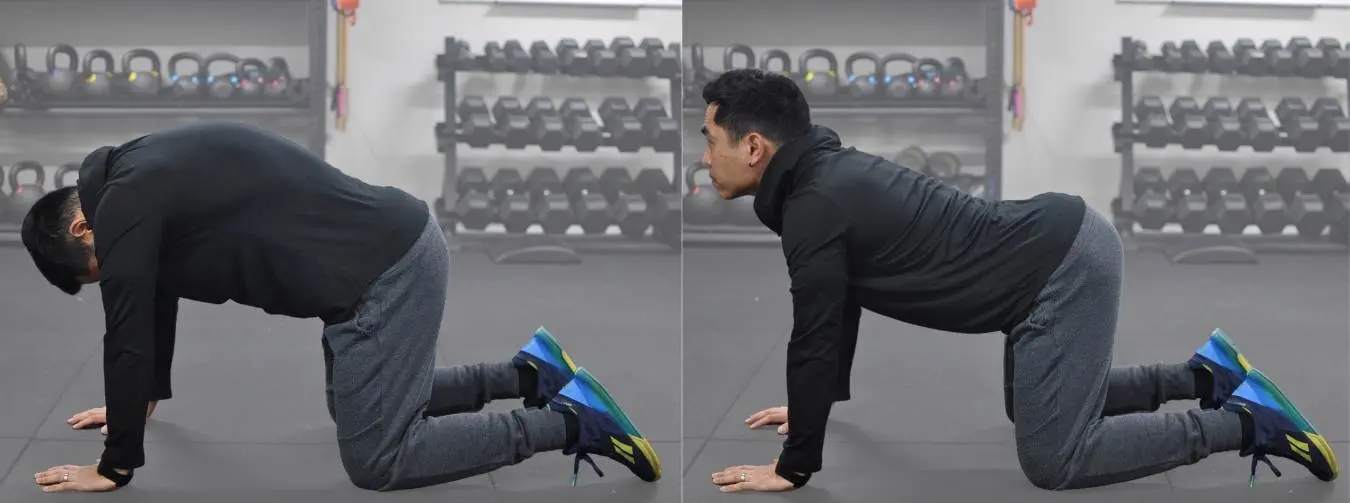
This yoga pose targets the muscles in your upper back and shoulders, helping to relieve tension and improve posture. It’s particularly beneficial for those who spend a lot of time sitting or hunched over a computer. The Cat-Cow helps to “unstick” our vertebrae, encouraging them to move as they were designed to.
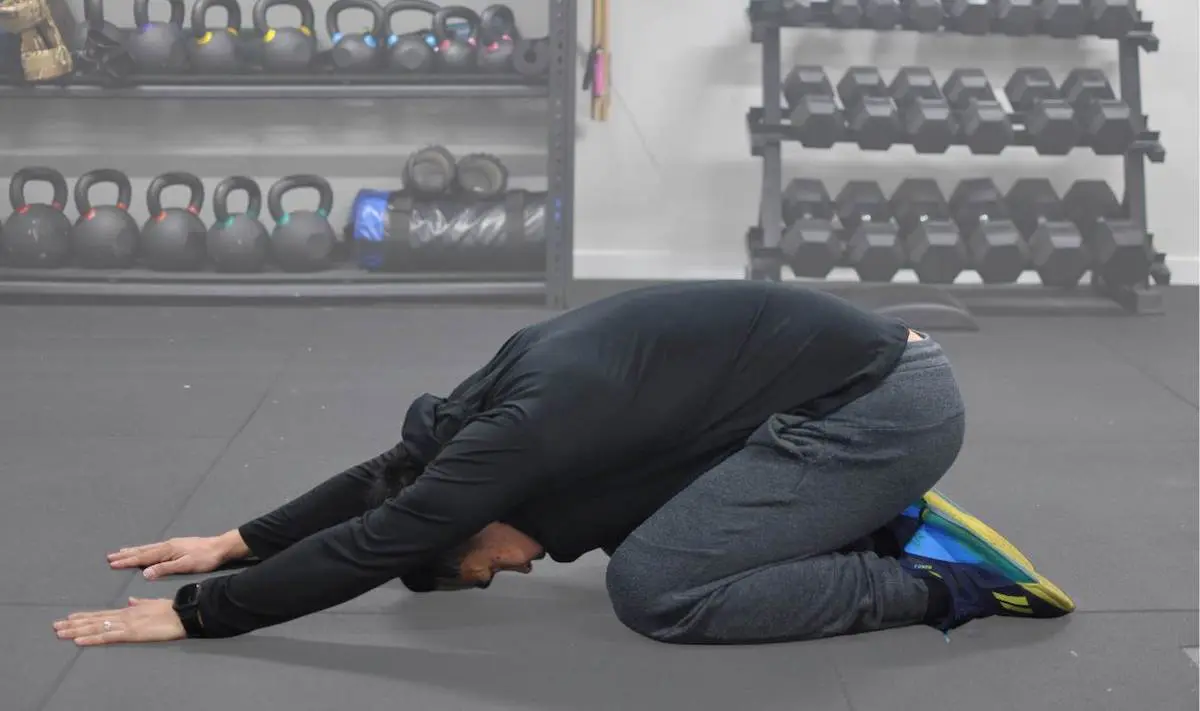
This gentle stretch targets the muscles in your upper back, promoting relaxation and relieving tension. By reaching your arms forward and letting your chest sink towards the floor, you can create a beautiful stretch along the upper spine and the muscles between the shoulder blades.
You can play around with the arm position in Child’s Pose to target different parts of the upper back. If you walk your hands over to the right, you’ll feel more of a stretch on the left side of your upper back. Walk them over to the left, and you’ll feel it on the right side.
Regularly stretching the thoracic spine can also help to improve your posture, increase spinal mobility, and alleviate any tension or discomfort in the area.
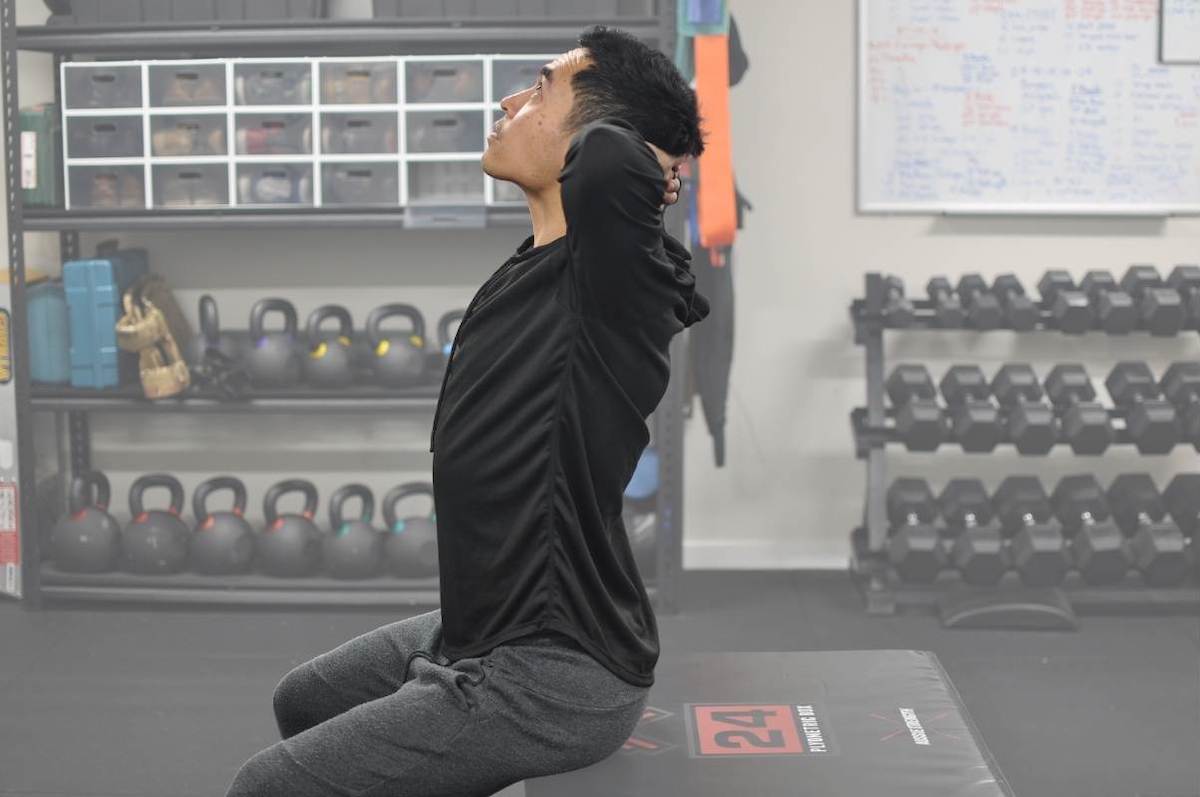
This stretch targets the muscles in your upper back, helping to improve posture and relieve tension. Regular thoracic spine stretches can help counteract the hunched posture that often develops from prolonged sitting or standing. It helps to open up the chest, pull the shoulders back, and align the spine.
Also, by working on extending the thoracic spine, you’re building strength in the muscles that support it.
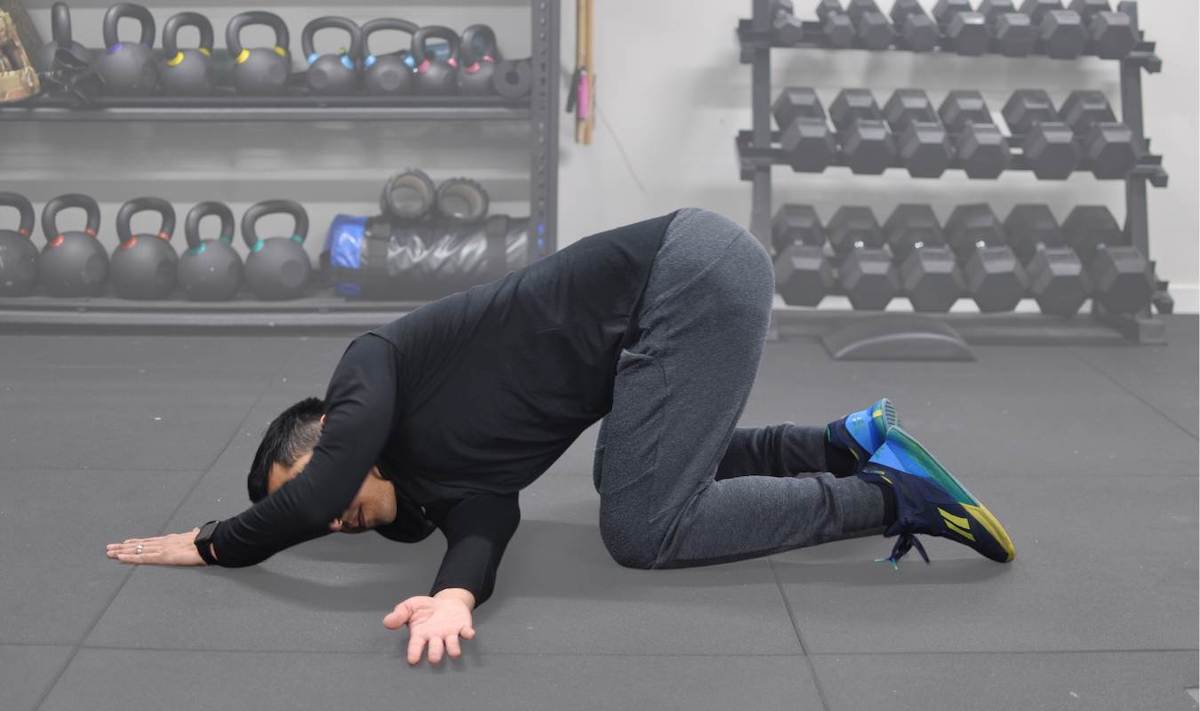
This stretch combines rotation with extension. It’s not just about stretching the muscles, it’s about encouraging the thoracic spine to move in ways it might have forgotten. This is particularly beneficial for activities that involve twisting or turning movements.
Chest stretches are important for maintaining good posture and preventing a hunched back. They also help to balance out the body if you do a lot of pushing exercises like push-ups or bench presses.
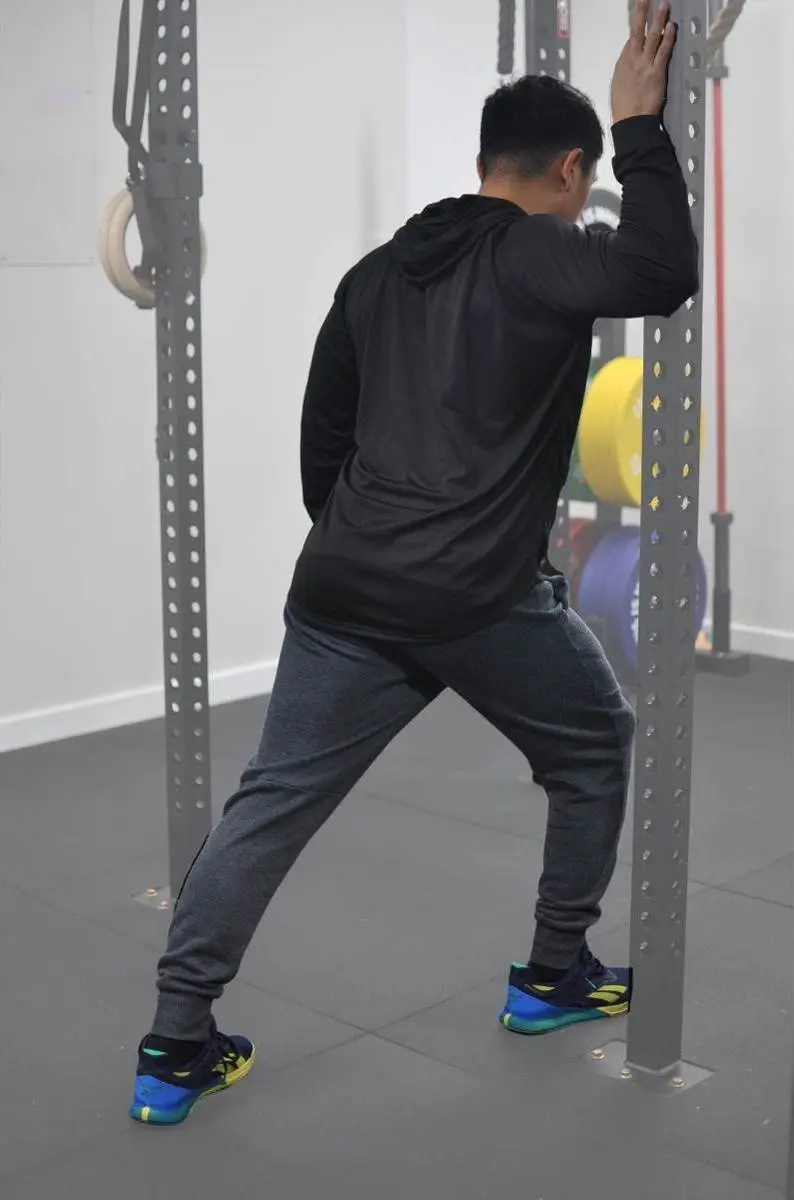
This stretch targets the pectoral muscles, helping to open up the chest and improve posture and breathing. This stretch can help counteract the the tightness developed from doing a lot of pushing exercises, or even just slouching over a desk.
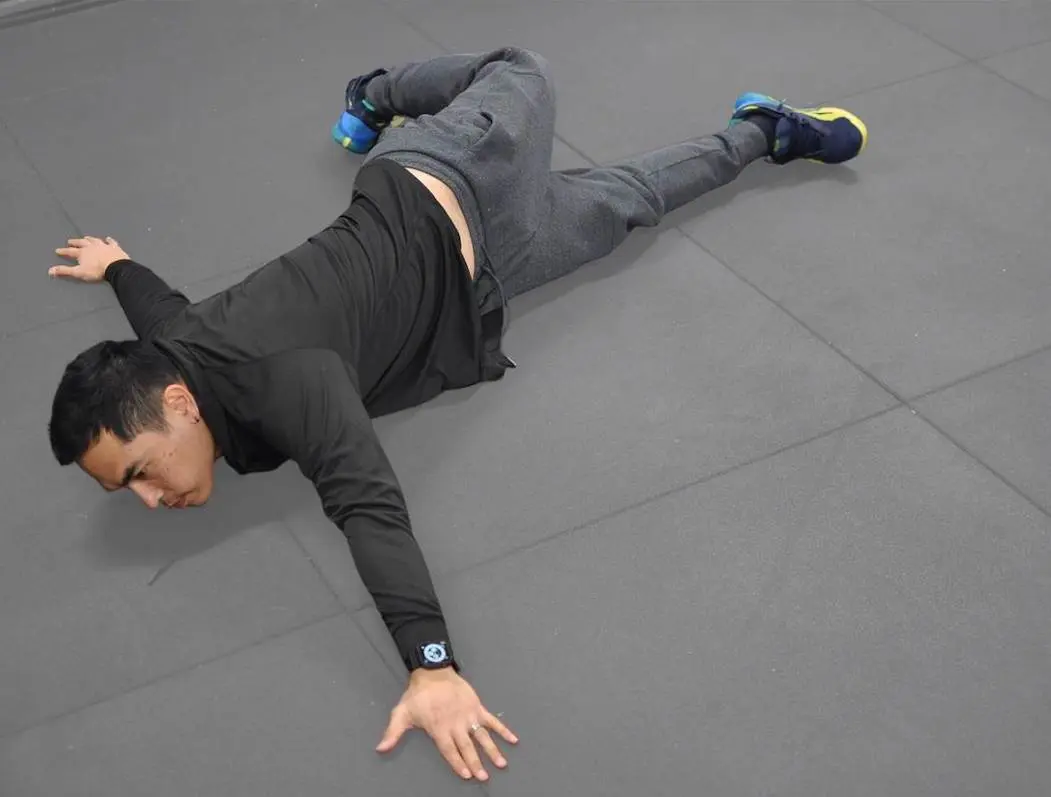
This is a more intense stretch that combines a stretch for the chest with a twist for the spine. It’s like a two-for-one deal that opens up the chest while also giving the spine a gentle twist. And trust me, it feels as good as it sounds.
Regularly performing these lower back stretches can help to maintain the health of your lumbar region, improve your overall back health, and contribute to a more comfortable and active lifestyle.
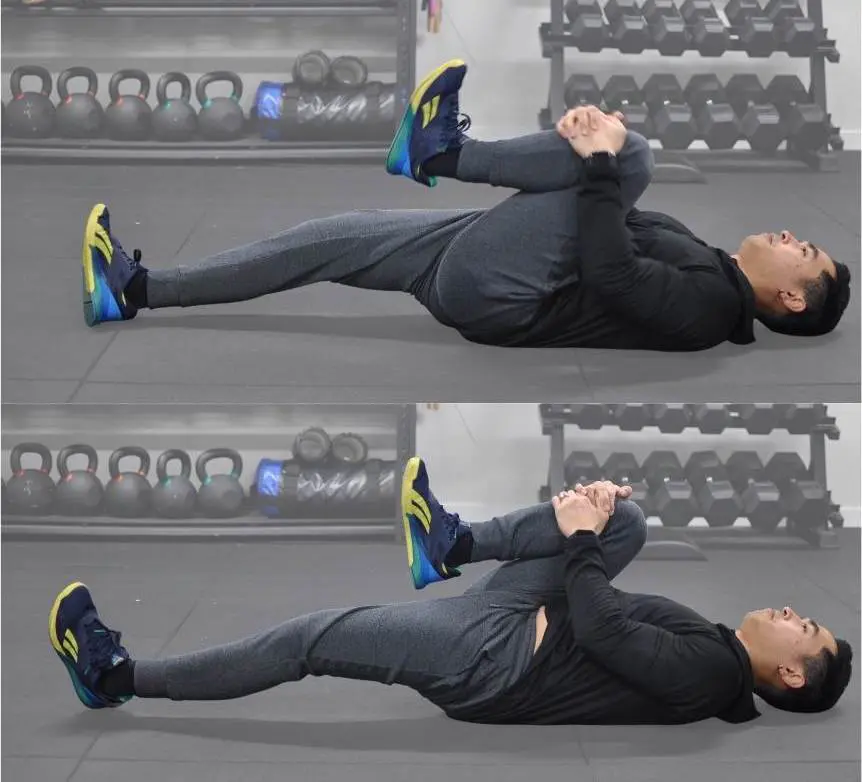
This stretch targets the lower back while also giving a gentle stretch to the glutes and the hamstrings, helping to alleviate tension and improve lower back flexibility. Whether you’re an athlete, a desk jockey, a busy parent, or someone dealing with lower back discomfort, the knee-to-chest Stretch is for you.
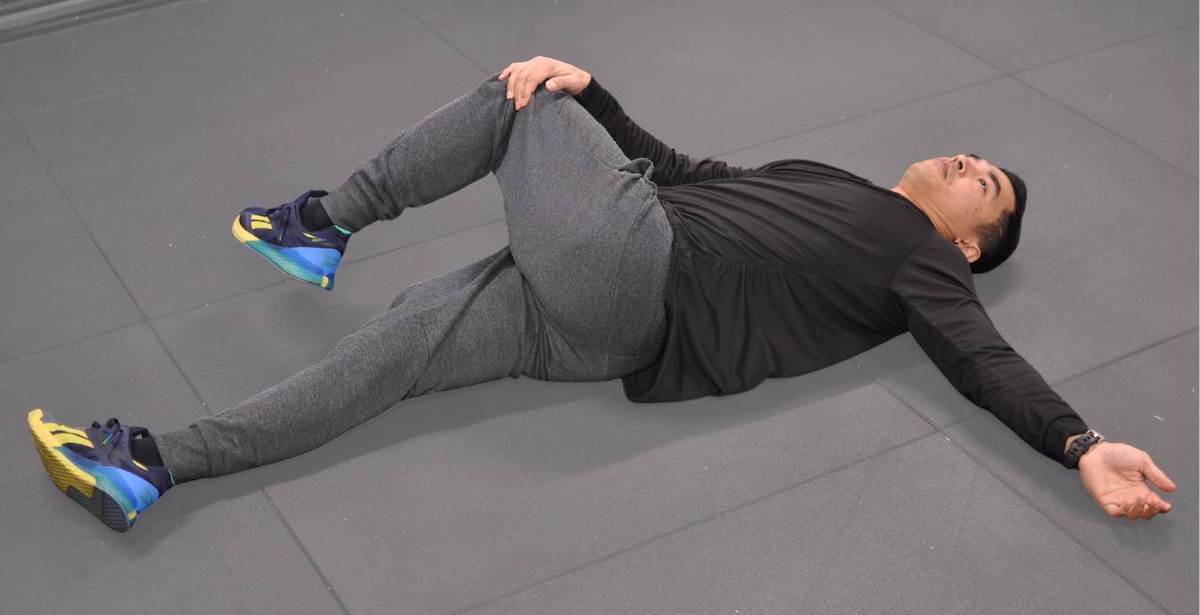
This is a fantastic stretch for anyone who feels that nagging tightness in the lower back or even those who just want to maintain good spinal health. While its primary focus is on the muscles of the lower back, the twist enables you to also give some love to the muscles around the spine, the obliques, and even the glutes.
Hip stretches are crucial for maintaining lower body flexibility and preventing muscle imbalances. They’re particularly important for runners or anyone who does a lot of walking or standing.
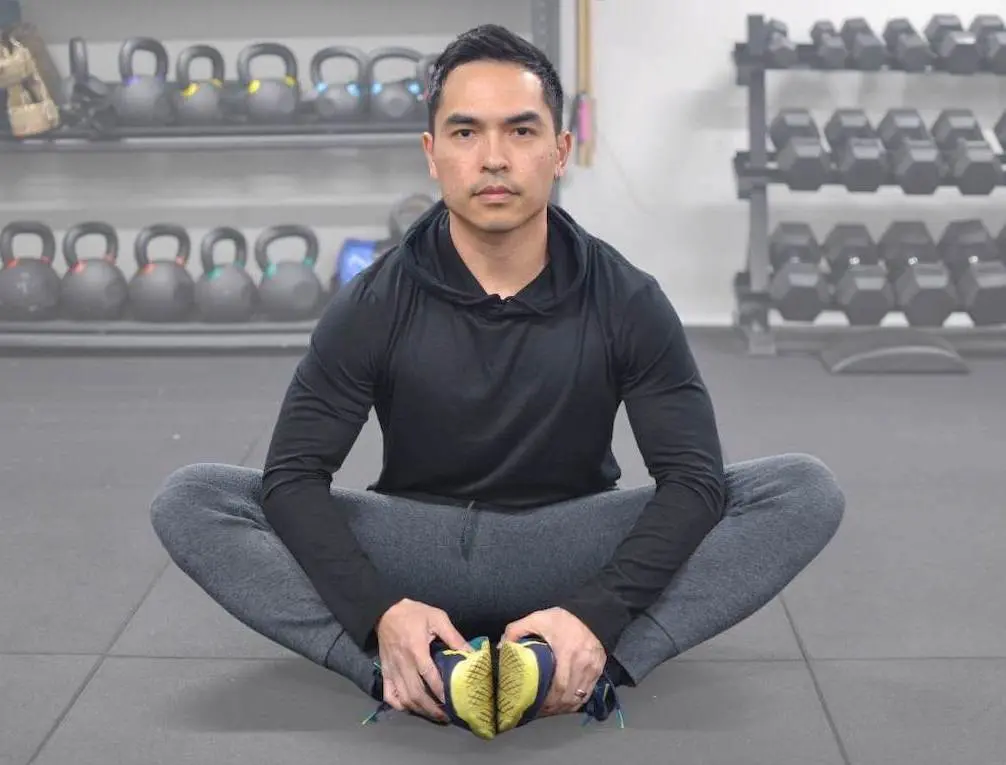
This stretch targets the inner thighs and hips, helping to improve hip flexibility and prevent tightness. It targets the adductor muscles of the hip, which can often become tight in individuals who do a lot of dancing, running, or cycling.
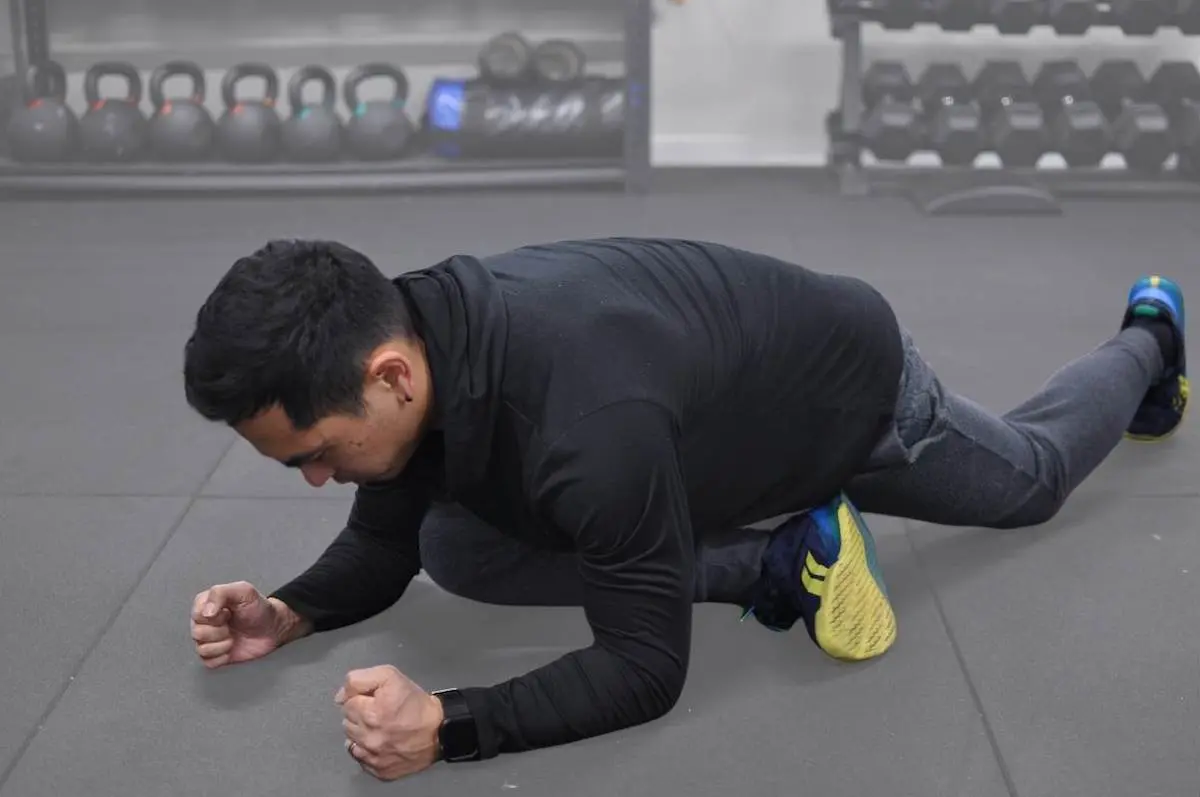
The Pigeon Pose, on the other hand, is a more comprehensive hip stretch that targets the hip flexors, glutes, and outer hip muscles. This stretch is particularly beneficial for individuals who spend a lot of time sitting, as this can lead to tight hip flexors.
Stretching your quadriceps can help to maintain their flexibility, promote better lower body function, and reduce the risk of injuries related to tight or imbalanced quadriceps muscles. It can also contribute to improved performance in sports and daily activities.
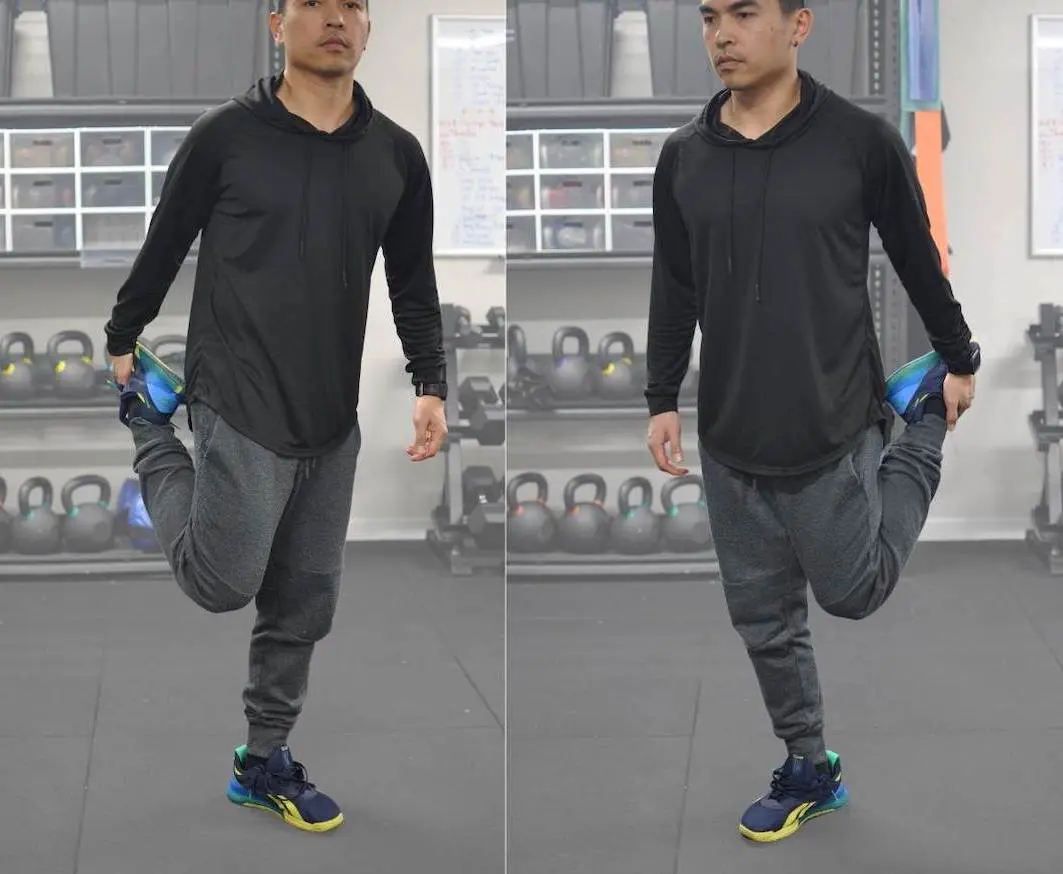
This stretch targets the quadriceps, helping to improve knee joint flexibility and prevent quadriceps tightness. It’s particularly beneficial for runners or those involved in sports that require running, jumping, or squatting.
At the same time, as you grab that ankle and pull it towards your glutes, you’re engaging the core, finding stability, and working on an often overlooked aspect of fitness – balance.
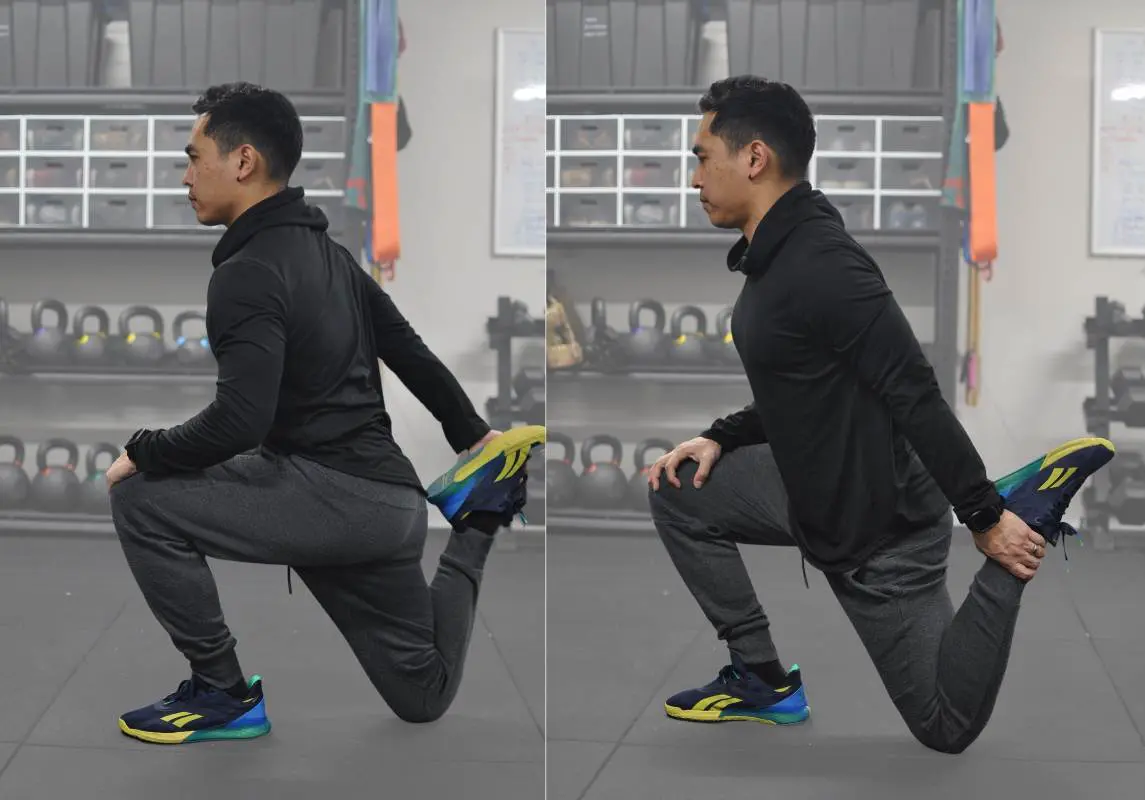
This stretch also targets the quadriceps but from a different angle, providing a deeper stretch for these muscles. It’s perfect for athletes, especially those who engage in activities like running, cycling, or soccer. It’s also a fantastic stretch for anyone who wants to keep those legs feeling limber and strong. As you kneel and pull that foot towards your glutes, you’re also opening up the hip flexors.
The hamstrings are the muscles at the back of your thighs. Stretching them helps to improve hip joint flexibility and prevent hamstring tightness.
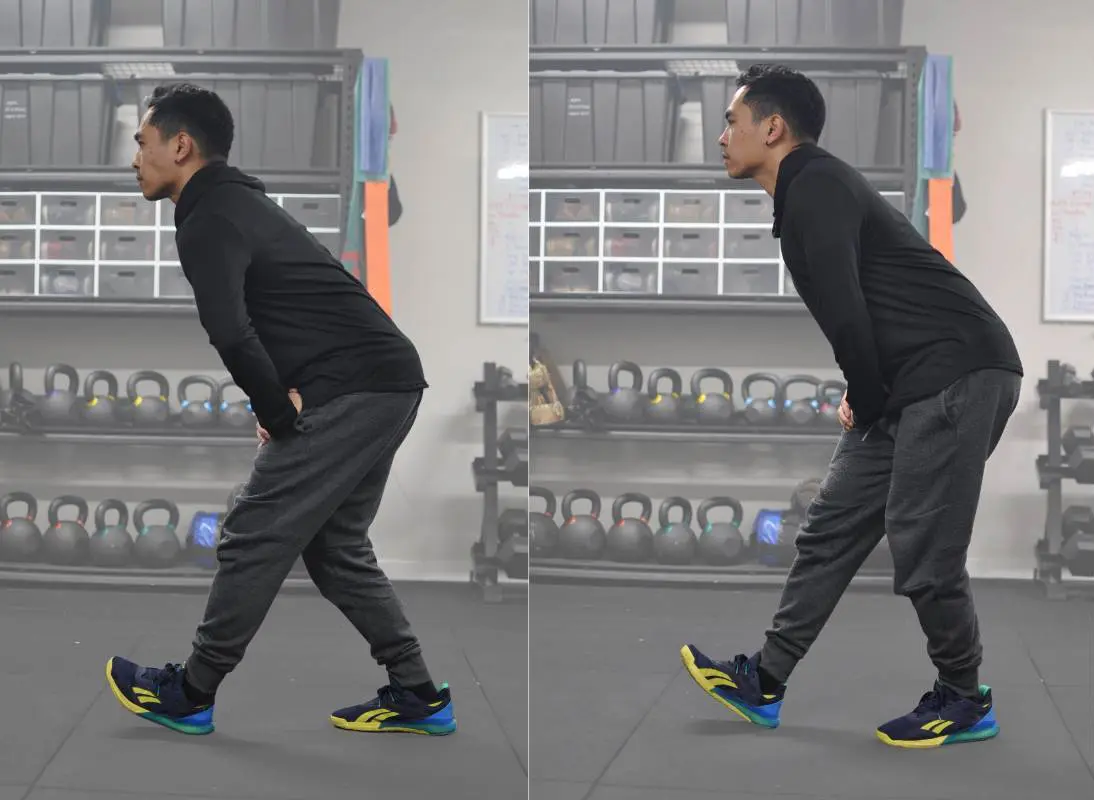
This stretch targets the hamstrings and is a versatile and empathetic stretch that caters to a wide array of individuals. From runners and cyclists seeking post-workout relief, to office workers needing a break from desk-induced stiffness, to older adults focusing on maintaining mobility.
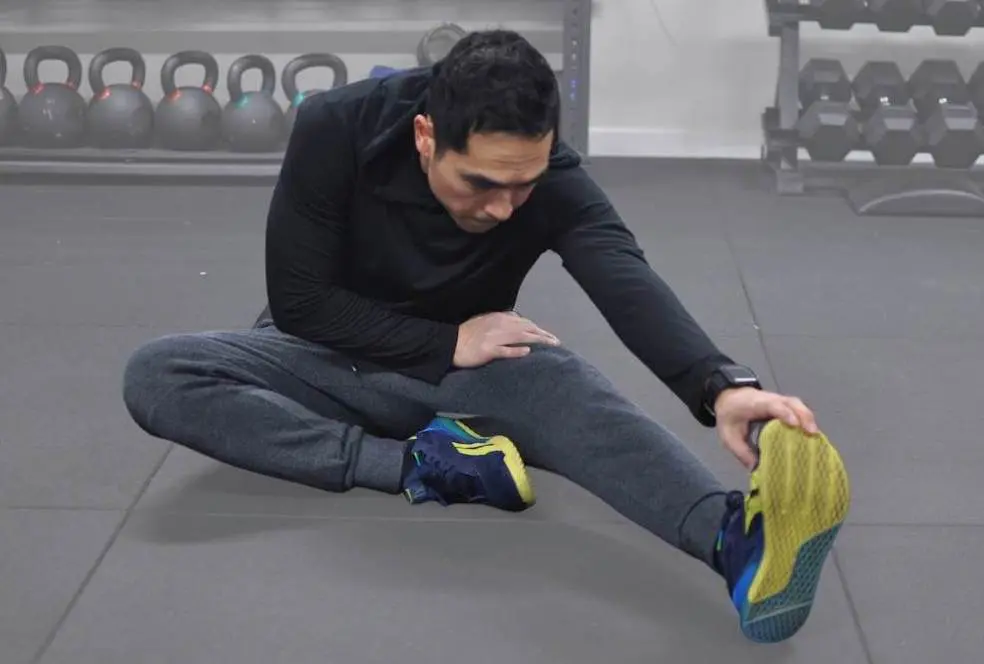
This stretch also targets the hamstrings but from a different angle, providing a more focused and controlled stretch for these muscles. It’s a great option if you prefer to stretch your hamstrings while seated or if you want to avoid putting pressure on your lower back.
The calf muscles are located at the back of your lower leg. Stretching them helps to improve ankle flexibility and prevent calf tightness.
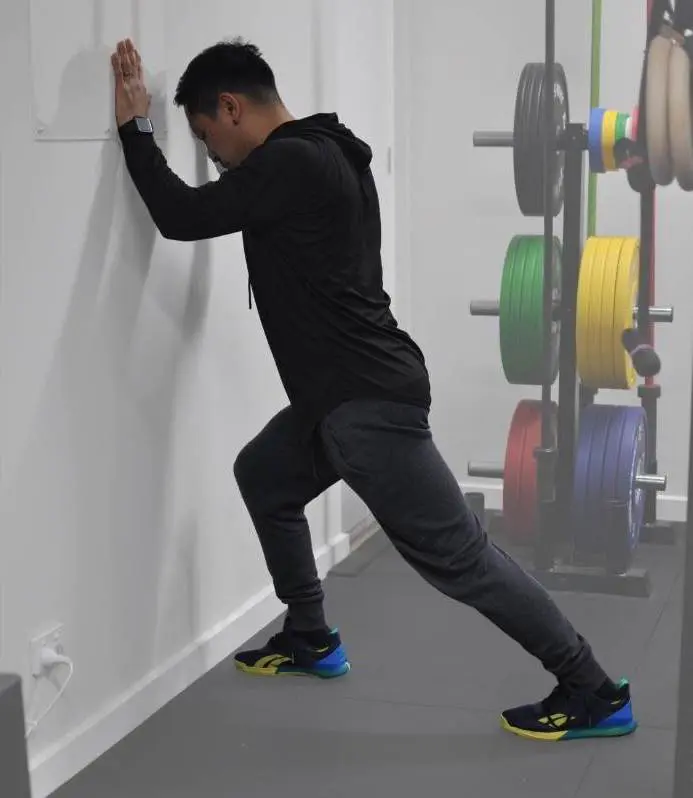
This stretch targets the gastrocnemius, which gives the calf its curved shape, and the soleus, which lies underneath and plays a vital role in daily activities like walking and standing. By adjusting the bend in your front knee, you can target each muscle individually, providing a comprehensive stretch for your calves.
NOTE: Don’t confuse this with the Achilles Stretch that you’ll be doing in this routine. In this stretch, your back leg should remain straight.
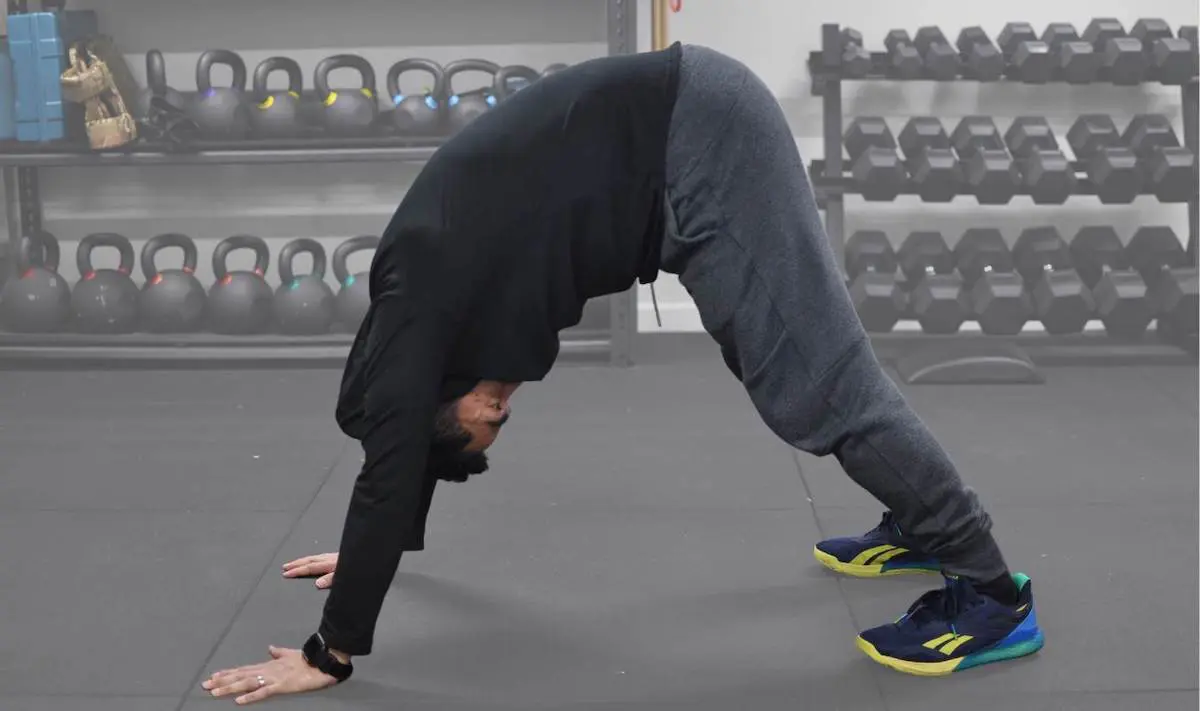
This is a classic yoga pose that stretches the calves, specifically the gastrocnemius and soleus. These muscles propel you forward in a run and keep you upright as you walk. In addition to stretching your calves, it also targets your hamstrings and back, making it a great full body stretch.
Regularly stretching your feet can help to maintain their flexibility, promote better foot and ankle health, and reduce the risk of foot-related discomfort or injuries. It can also contribute to improved balance and stability in your daily activities and sports.
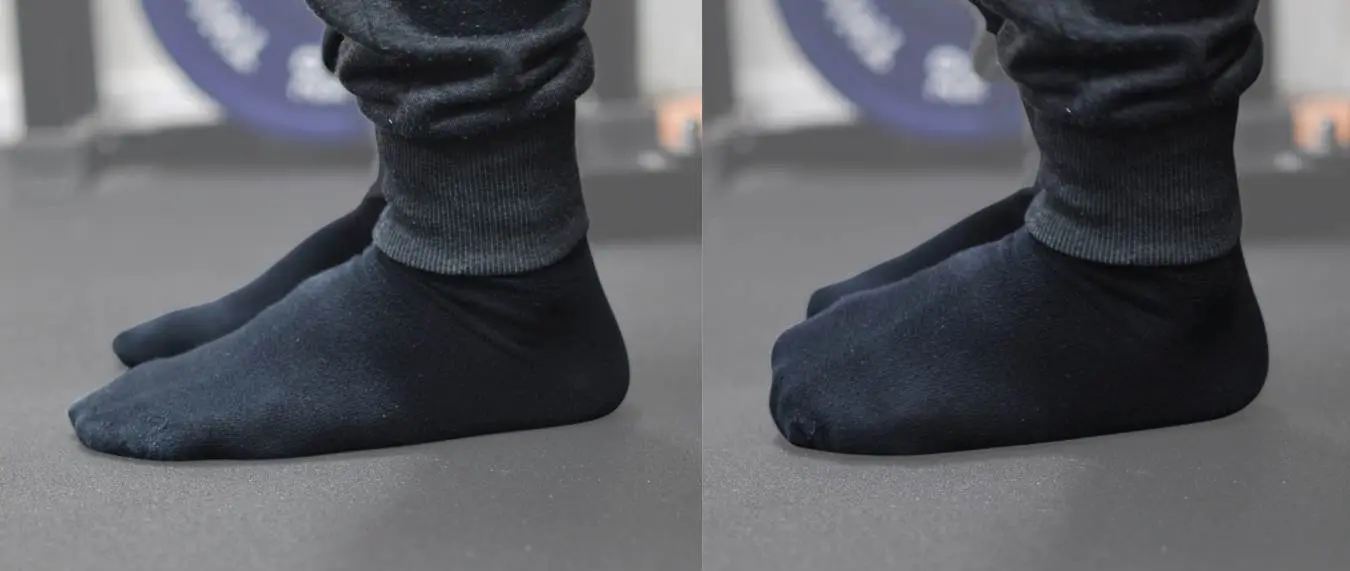
The Toe Curl is a simple exercise that can help to strengthen and stretch the muscles in your feet. It’s particularly beneficial for individuals who spend a lot of time on their feet or who frequently wear tight, constricting shoes.
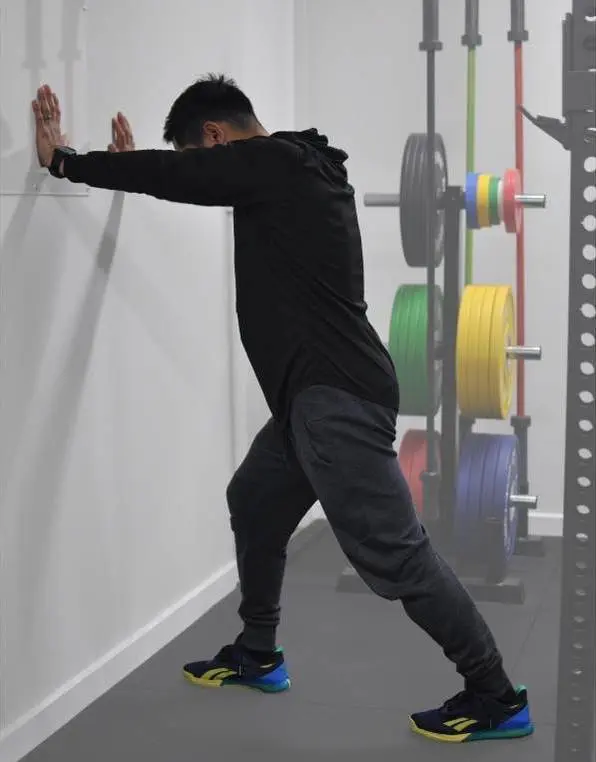
The Achilles Stretch is particularly beneficial for those who do a lot of running or walking. The Achilles tendon, located at the back of the ankle, is the largest tendon in the body and can often become tight or inflamed through overuse.
Regularly stretching this tendon can help to improve its flexibility, reduce the risk of injury, and alleviate any discomfort in the area. This stretch also targets the calf muscles, promoting overall lower leg flexibility.
NOTE: Don’t confuse this with the Wall Calf Stretch that you did earlier in this routine. In this stretch, your back leg should be slightly bent – and focus on keeping that heel to the ground.
I’ve seen how crucial the cool-down phase is, yet it’s often overlooked. Just like you wouldn’t abruptly stop a car going at full speed, you shouldn’t abruptly stop your body after a full-on stretching routine.
Why is this so important, especially for a full-body stretching routine? Well, a cool-down allows your heart rate and blood pressure to decrease gradually, which is much safer for your cardiovascular system.
This is particularly relevant after a comprehensive routine like our 30 minute full-body stretch, where your entire body has been engaged.
And let’s not forget about those muscles. After a full-body stretching routine, your muscles have been working hard, and lactic acid can build up.
A cool-down helps to flush out this lactic acid, reducing muscle soreness and stiffness. Trust me, after stretching everything from your neck to your feet, your muscles will thank you!
In my experience, a cool-down also provides a perfect opportunity for a little mindfulness. As you’re doing some light stretches or deep breathing, you can reflect on your routine, tune into how your body feels, and even give yourself a mental pat on the back for your efforts. It’s a great way to end on a positive note.
So, next time you’re wrapping up your 30 minute full-body stretching routine, remember to take a few minutes to cool down. Your body (and mind) will appreciate it.
When you’re stretching, resist the urge to bounce. I know it can be tempting, but trust me on this one. Bouncing can cause small tears in your muscles, leading to scar tissue that can make you less flexible over time. So, remember to hold your stretches in a static position.
Make sure you’re stretching both sides of your body equally. Our bodies aren’t perfectly symmetrical, and that’s okay. But significant imbalances can lead to injuries. So, whether you’re doing a neck tilt or a butterfly stretch, give both sides of your body equal attention.
Breathing. It sounds simple, right? But you’d be surprised how many people hold their breath when they stretch. Deep, relaxed breathing helps to deliver oxygen to your muscles and can actually help you stretch further. So, don’t forget to breathe!
This is probably the most important tip I can give you. Stretching should never be painful. If it hurts, ease up a bit until you feel a gentle pull. Remember, flexibility doesn’t happen overnight. Be patient with your body.
Finally, be consistent. Just like any other form of exercise, the benefits of stretching come with regular practice. So, try to incorporate our 30-minute full-body stretching routine into your schedule on a regular basis.
I’ve seen firsthand the transformative power of regular stretching. It’s not just about becoming more flexible or saying goodbye to muscle tension – although those are certainly fantastic benefits.
It’s about taking a few moments each day to connect with your body, to appreciate all it does for you, and to give it the care it deserves.
Our 30 minute full-body stretching routine is designed to be comprehensive, targeting everything from your neck to your feet.
But remember, it’s not set in stone. Feel free to modify it to suit your needs. Maybe you want to spend more time on your hips, or perhaps your shoulders need extra attention. Listen to your body and adjust accordingly.
And remember, consistency is key. Try to make this routine a regular part of your schedule. It could be a great way to start your day, a midday break from work, or a relaxing evening routine. Find what works for you and stick with it.
I hope this guide has been helpful and that you’re feeling inspired to make stretching a regular part of your fitness journey. Remember, every little bit helps, and it’s never too late to start. So, why not give it a go? Your body will thank you. Happy stretching!
As a certified personal trainer, I recommend incorporating this routine into your schedule at least 2-3 times per week. However, feel free to do it more often if you enjoy it and have the time. Remember, consistency is key!
Absolutely! This routine is designed for people of all flexibility levels. Remember, stretching is not about being the most flexible person in the room. It’s about improving your own flexibility and feeling good in your body. Always listen to your body and never stretch to the point of pain.
Yes, you can. However, keep in mind that this is a comprehensive stretching routine that targets the entire body and takes 30 minutes to complete. If you’re pressed for time, you might want to focus on stretching the specific muscles you’ll be using in your workout.
If you have an injury, I recommend consulting with a healthcare professional before starting any new exercise or stretching routine. They can provide guidance based on your specific situation.
Most of the stretches in this routine are safe for pregnant individuals. However, everyone’s body and pregnancy is different, so it’s always a good idea to consult with a healthcare professional before starting any new exercise routine during pregnancy.
If you don’t feel a stretch, you might need to adjust your position or go a bit deeper into the stretch. However, never stretch to the point of pain. If you’re still having trouble, consider consulting with a personal trainer or physical therapist for guidance.
IMPORTANT: Remember, if you have any other questions or concerns, don’t hesitate to reach out to a fitness or healthcare professional. They can provide personalized advice based on your specific needs and goals.
Download our full body stretching routine PDF below: